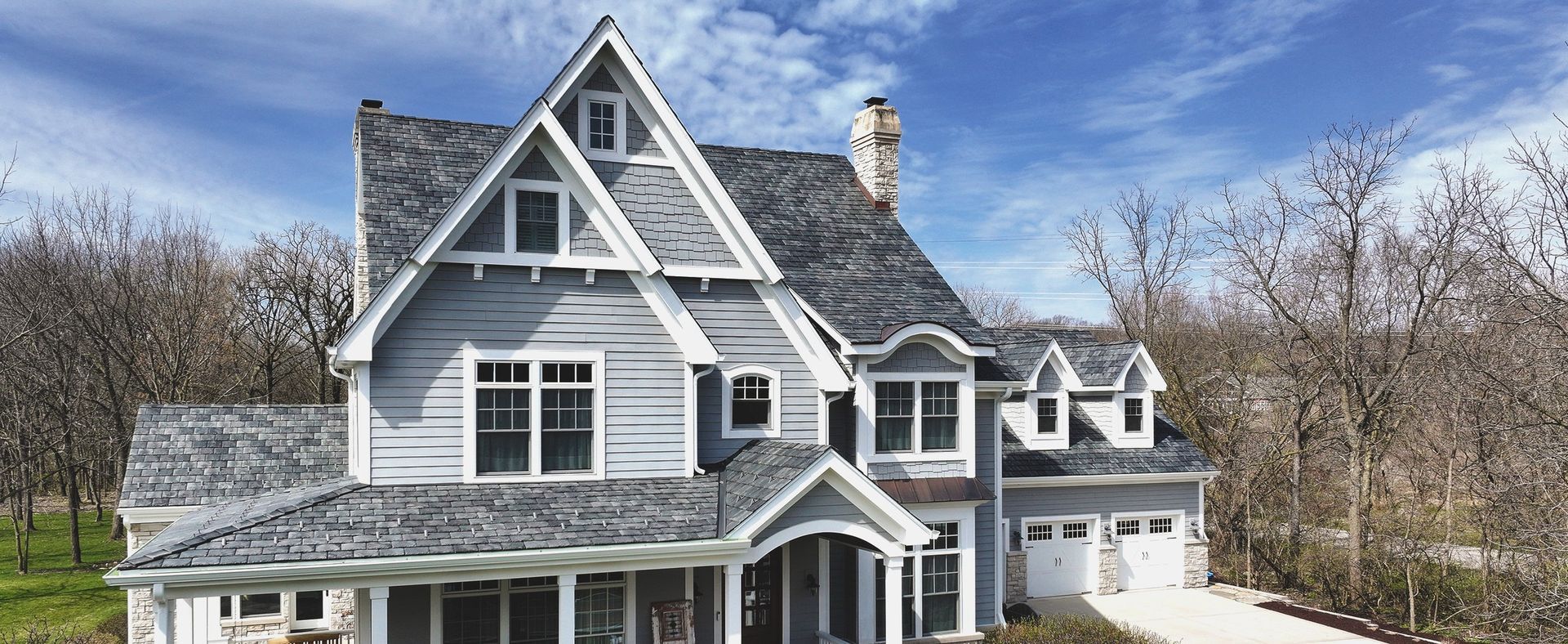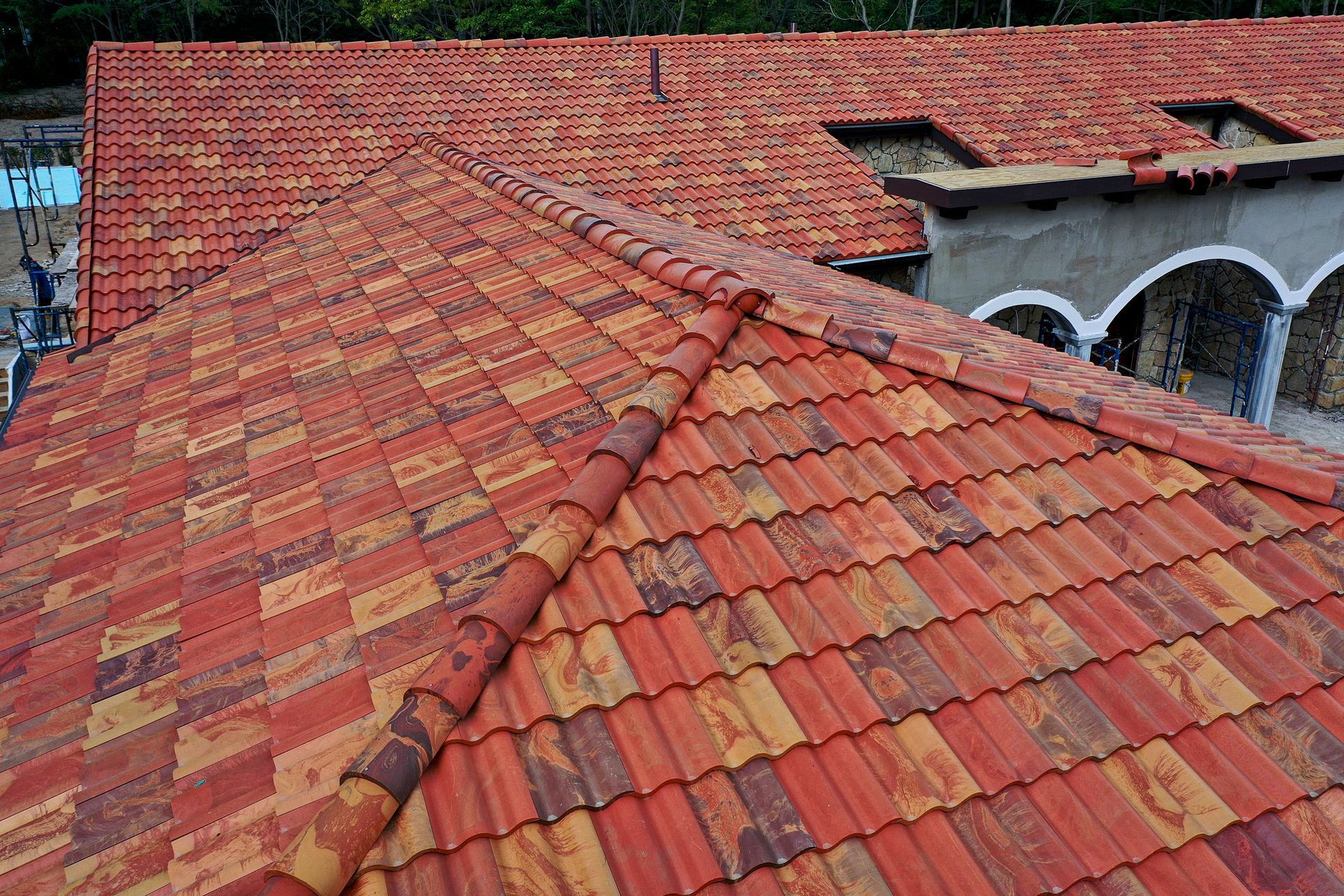The Latest Trends in Residential Roofing for Mt Crawford Homeowners
The Latest Trends in Residential Roofing for Mt Crawford Homeowners
A quality residential roof is essential for the protection and safety of your home. It serves as the first line of defense against the elements, including rain, snow, wind, and extreme temperatures. A well-maintained roof can also help to regulate the temperature inside your home, reducing energy costs and increasing overall comfort. Additionally, a quality roof adds to the curb appeal and value of your home, making it an important investment for homeowners. Without a quality roof, your home is at risk of water damage, mold growth, and structural issues, which can be costly and dangerous to repair. Therefore, it is crucial to prioritize the quality and maintenance of your residential roof to ensure the long-term safety and integrity of your home.
A quality residential roof is not only important for protecting your home and belongings, but also for ensuring the safety and well-being of your family. A damaged or deteriorating roof can pose serious risks to those living inside the home, including the potential for leaks, collapses, and other hazards. By investing in a quality residential roof, you can have peace of mind knowing that your home is well-protected and secure. Additionally, a well-maintained roof can help to prevent costly repairs and replacements in the future, saving you time and money in the long run. Overall, the importance of a quality residential roof cannot be overstated, as it is a fundamental aspect of maintaining a safe, comfortable, and valuable home.
Choosing the Right Material for Your Residential Roof
When it comes to choosing the right material for your residential roof, there are several factors to consider, including durability, cost, aesthetics, and climate suitability. Asphalt shingles are a popular choice for residential roofs due to their affordability, ease of installation, and variety of colors and styles. They are also relatively durable and can withstand moderate weather conditions. However, they may not be the best option for homes in areas with extreme weather or high winds. Metal roofing is another popular choice for residential roofs, as it is highly durable, energy-efficient, and low-maintenance. It is also available in a variety of styles and colors to suit different architectural designs.
For homeowners seeking a more environmentally-friendly option, there are also sustainable roofing materials such as clay tiles, slate, and wood shakes. These materials are known for their longevity and natural beauty, but they may require more maintenance and have a higher upfront cost. Ultimately, the right material for your residential roof will depend on your budget, climate, aesthetic preferences, and long-term maintenance goals. It is important to consult with a professional roofing contractor to determine the best material for your specific needs and to ensure that it is installed correctly for maximum performance and longevity.
Signs That Your Residential Roof Needs Repair or Replacement
There are several signs that indicate your residential roof may be in need of repair or replacement. These include visible damage such as missing or broken shingles, sagging or uneven areas, water stains on the ceiling or walls, and excessive granules in the gutters. Additionally, if your roof is more than 20 years old, it may be nearing the end of its lifespan and in need of replacement. It is important to address these issues promptly to prevent further damage to your home and belongings. Ignoring signs of roof damage can lead to more extensive and costly repairs in the future.
Another common sign that your residential roof needs attention is an increase in energy costs or indoor temperature fluctuations. A damaged or poorly insulated roof can allow air leaks and heat transfer, resulting in higher energy bills and reduced comfort inside the home. If you notice any of these signs, it is important to contact a professional roofing contractor to assess the condition of your roof and recommend the necessary repairs or replacement. By addressing these issues early on, you can prevent further damage and ensure the long-term integrity of your residential roof.
Hiring a Professional Residential Roofing Contractor
When it comes to repairing or replacing your residential roof, it is crucial to hire a professional roofing contractor with the expertise and experience to get the job done right. A reputable contractor will have the necessary licenses, insurance, and certifications to ensure that they are qualified to work on your roof. They will also have access to high-quality materials and equipment to provide a durable and long-lasting solution for your home. Additionally, a professional roofing contractor will have a thorough understanding of local building codes and regulations to ensure that your roof meets all necessary requirements.
Furthermore, hiring a professional roofing contractor can save you time and money in the long run by preventing costly mistakes and ensuring that the job is completed efficiently and effectively. They will also provide warranties on their workmanship and materials to give you peace of mind knowing that your investment is protected. When selecting a roofing contractor, it is important to research their reputation, read customer reviews, and request references to ensure that they have a track record of delivering high-quality work. By hiring a professional residential roofing contractor, you can have confidence that your roof will be in good hands and that your home will be well-protected for years to come.
Understanding the Residential Roofing Process
The residential roofing process involves several key steps to ensure that your new roof is installed correctly and efficiently. The first step is to conduct a thorough inspection of your existing roof to assess its condition and identify any necessary repairs or replacements. This will help to determine the scope of work needed and provide an accurate estimate for the project. Once the inspection is complete, the next step is to select the appropriate materials for your new roof based on your budget, aesthetic preferences, and climate considerations.
After selecting the materials, the roofing contractor will begin the installation process by removing the old roofing materials and preparing the surface for the new roof. This may involve repairing any damaged areas, installing underlayment, and ensuring proper ventilation for the attic space. Once the surface is prepared, the new roofing materials will be installed according to manufacturer specifications and local building codes. This may include laying down shingles or other roofing materials in a specific pattern or style to ensure proper water drainage and protection against the elements. Finally, the installation process will be completed with finishing touches such as flashing, gutters, and trim work to provide a seamless and durable solution for your home.
Tips for Maintaining Your Residential Roof
Proper maintenance is essential for ensuring the longevity and performance of your residential roof. Regular inspections should be conducted at least once a year to check for signs of damage or wear, such as missing or damaged shingles, leaks, or sagging areas. It is also important to keep gutters clean and free of debris to prevent water buildup and potential damage to the roof and foundation. Additionally, trimming overhanging tree branches can help to prevent damage from falling limbs or excessive debris on the roof.
In addition to regular inspections and maintenance tasks, it is important to address any issues promptly by contacting a professional roofing contractor for repairs or replacements as needed. By staying proactive with maintenance and addressing issues early on, you can prevent more extensive damage and costly repairs in the future. Overall, proper maintenance is key to ensuring that your residential roof remains in good condition and continues to protect your home for years to come.
The Benefits of Investing in a New Residential Roof
Investing in a new residential roof offers several benefits for homeowners, including increased property value, improved energy efficiency, enhanced curb appeal, and long-term protection for your home. A new roof can significantly enhance the overall appearance of your home by providing a fresh and updated look that complements its architectural style. This can increase curb appeal and make your home more attractive to potential buyers if you decide to sell in the future.
Furthermore, a new residential roof can improve energy efficiency by providing better insulation and ventilation for your home. This can help to reduce energy costs by maintaining more consistent indoor temperatures throughout the year. Additionally, a new roof can provide better protection against leaks, water damage, and other potential hazards that can compromise the safety and integrity of your home. By investing in a new residential roof, you can have peace of mind knowing that your home is well-protected and that its value has been enhanced for years to come.
In conclusion, a quality residential roof is essential for protecting your home from the elements and ensuring the safety and well-being of your family. Choosing the right material for your residential roof requires careful consideration of factors such as durability, cost, aesthetics, and climate suitability. Signs that your residential roof needs repair or replacement should be addressed promptly to prevent further damage and ensure long-term integrity. Hiring a professional residential roofing contractor is crucial for ensuring that your new roof is installed correctly and efficiently. Understanding the residential roofing process involves several key steps to ensure that your new roof meets all necessary requirements for durability and performance.
Proper maintenance is essential for ensuring the longevity and performance of your residential roof by conducting regular inspections at least once a year to check for signs of damage or wear. Investing in a new residential roof offers several benefits for homeowners including increased property value improved energy efficiency enhanced curb appeal long-term protection for your home.
Overall investing in a quality residential roof is an important aspect of maintaining a safe comfortable valuable home that provides protection against potential hazards such as leaks water damage mold growth structural issues extreme temperatures high winds or other elements that could compromise its safety integrity or value.
By prioritizing the quality maintenance of your residential roof you can have peace of mind knowing that your home is well-protected secure comfortable valuable for years to come.




